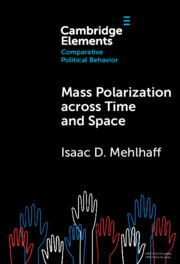Element contents
Mass Polarization across Time and Space
Published online by Cambridge University Press: 04 March 2025
Summary
Keywords
- Type
- Element
- Information
- Online ISBN: 9781009350662Publisher: Cambridge University PressPrint publication: 03 April 2025
References
- 1
- Cited by

